武汉黄鹤楼 - 票价、开放时间、交通指南和亮点
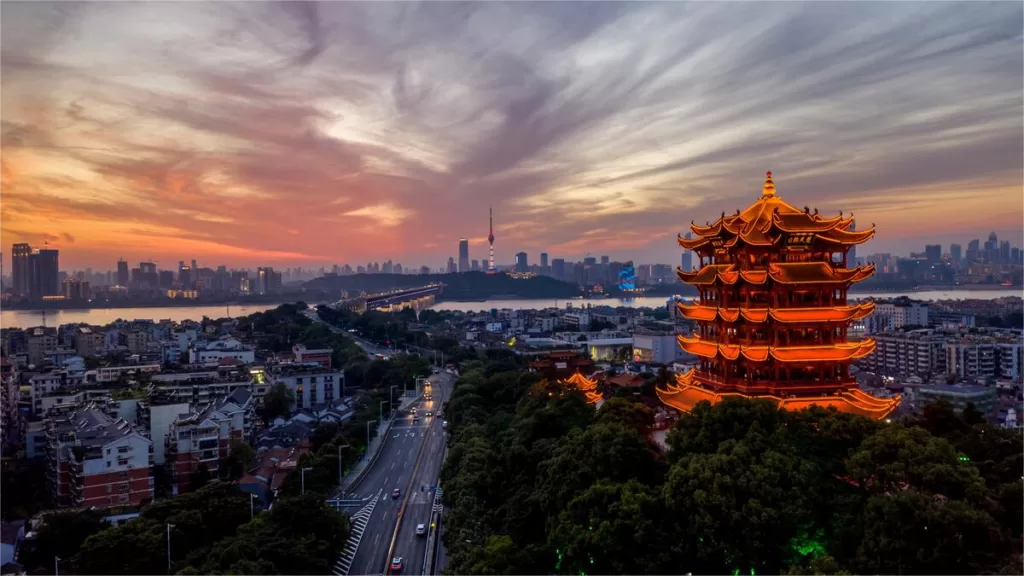
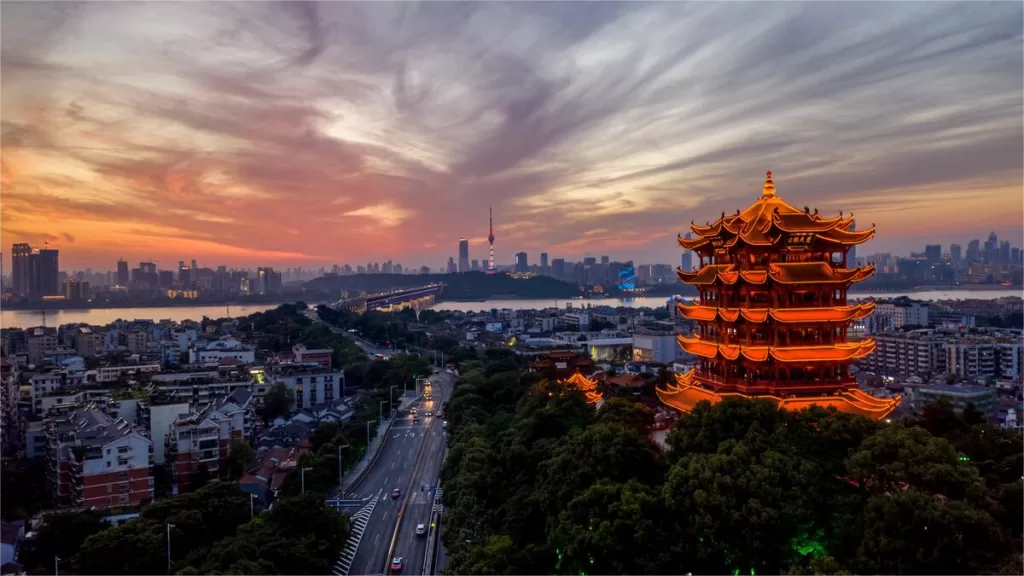
The Yellow Crane Tower (黄鹤楼), located in Wuhan, Hubei Province, China, stands as a testament to history and cultural significance. Its origins trace back to the Three Kingdoms period in 223 AD, with multiple renovations and rebuilds over the centuries. The current structure draws inspiration from the Qing Dynasty’s “Tongzhi Tower” and was meticulously reconstructed in 1985. This iconic tower has gained worldwide recognition due to the poem “Yellow Crane Tower” written by the Tang Dynasty poet Cui Hao, elevating its status as a symbol of literary and architectural excellence.
目录
- 基本信息
- 地点和交通
- History of Yellow Crane Tower
- Highlights of Yellow Crane Tower
- Vlog about Yellow Crane Tower
- 从评论中总结出的有用提示
- Facts about Yellow Crane Tower
- Attractions near Yellow Crane Tower
基本信息
| 网站 | http://www.cnhhl.com/ |
| Estimated Lenght of Tour | 1 - 2 小时 |
| 票价 | Daytime: 70 RMB Nighttime: 120 RMB Chime Bell Performance: 50 RMB |
| 开放时间 | Day Tour: 8.30 – 18.00 Night Tour: 19.30 – 22.00 |
| Chime Bell Performance | Ticket Price: 30 CNY per person Timetable: 10:30; 11:30; 12:30; 14:00; 15:00; 16:00 |
| 电话号码 | 0086-027-88875096 |
地点和交通
The Yellow Crane Tower is located in the Wuchang District of Wuhan, Hubei Province, China. Perched atop the summit of She Shan (Snake Hill), it offers a commanding view of the majestic Yangtze River, which stretches for thousands of miles. To get there, you can choose the following ways:
巴士 Take bus 10, 401, 504, YX10, Tram 1, or Tram 7 and get off at Huanghe Tower Stop (黄鹤楼站).
地铁 The closest metro station to this historical site is Simenkou Huanghelou (司门口黄鹤楼) on line 5. After getting out of the station from Exit 1, the Yellow Crane Tower will be right across the street.
History of Yellow Crane Tower
The history of the Yellow Crane Tower is a remarkable journey spanning over two millennia. It all began in the year 223 AD during the Three Kingdoms period when Sun Quan, the ruler of Wu, ordered the construction of a military tower on Huanghuji Island in the southwest corner of the newly built Xiakou city. This tower, known as the Yellow Crane Tower, served as a lookout point for military purposes.
Throughout the centuries, the Yellow Crane Tower became the subject of poems and legends. In the year 462 AD, the renowned poet Bao Zhao composed the poem “Climbing Huanghuji” at the tower, marking one of the earliest literary references to this iconic structure. The story of a man encountering an immortal riding a crane at the Yellow Crane Tower was documented in a book called “Shu Yi Ji,” written by the scholar Zu Chongzhi in 469 AD, representing the earliest written account of the tower’s name.
In the subsequent centuries, several historical and literary figures left their mark on the Yellow Crane Tower’s legacy. During the Tang Dynasty, in 723 AD, the poet Cui Hao composed the famous poem “Yellow Crane Tower,” further contributing to the tower’s literary importance and earning it the nickname “Cui’s Tower.”
However, the physical structure of the Yellow Crane Tower experienced a series of rises and falls over the centuries. It underwent numerous renovations and rebuilds during the Ming and Qing Dynasties, with notable contributions from figures such as Zhou De Xing and Shu Tong. The tower was destroyed multiple times by fires and warfare, yet its historical and cultural significance continued to grow.
The most recent reconstruction of the Yellow Crane Tower occurred in the 1980s. The decision to rebuild the tower was made in 1980, and construction commenced in 1981. The new Yellow Crane Tower was completed in 1985, adhering to the architectural style of the Qing Dynasty’s Tongzhi era. This reconstruction was a testament to the enduring cultural importance of the Yellow Crane Tower, and it remains a symbol of literary and architectural excellence in modern times.
Highlights of Yellow Crane Tower
历史意义
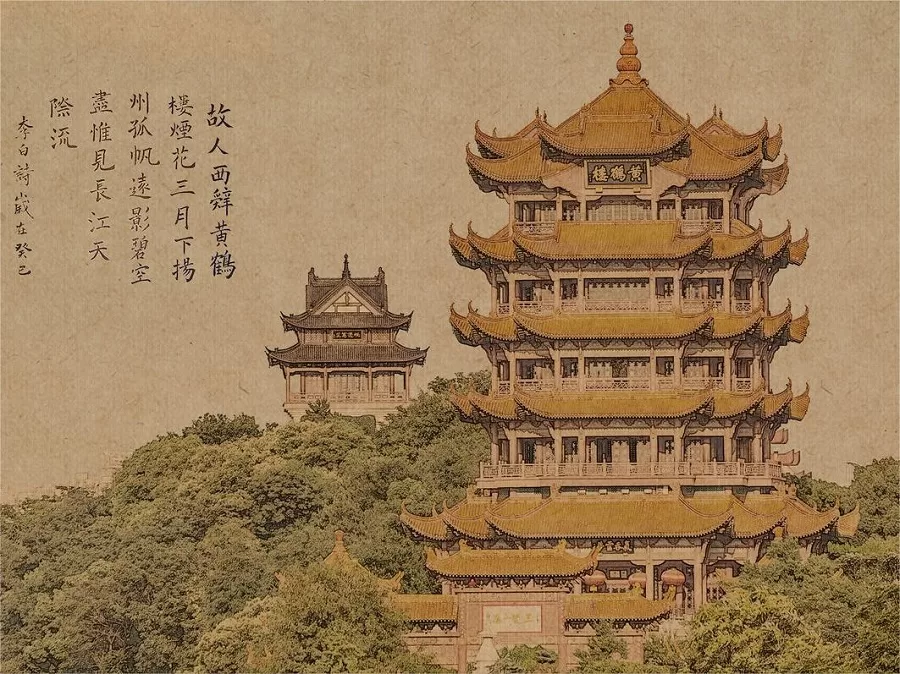
From ancient times, the Yellow Crane Tower has been hailed as the “finest under heaven” for its breathtaking beauty. Alongside the nearby attractions of Qingchuan Pavilion and Guqin Platform, it is known as one of the “Three Great Sites of Wuhan.” Furthermore, it shares a prestigious rank with Yueyang Tower in Hunan and Tengwang Pavilion in Nanchang, collectively known as the “Three Great Towers of Southern China.” The Yellow Crane Tower is regarded as the foremost among the “Ten Scenic Wonders of Wuhan,” one of China’s “Four Great Ancient Towers,” and among the “Ten Historical and Cultural Towers of China,” earning the title of the “Number One Tower under Heaven.”
建筑奇迹
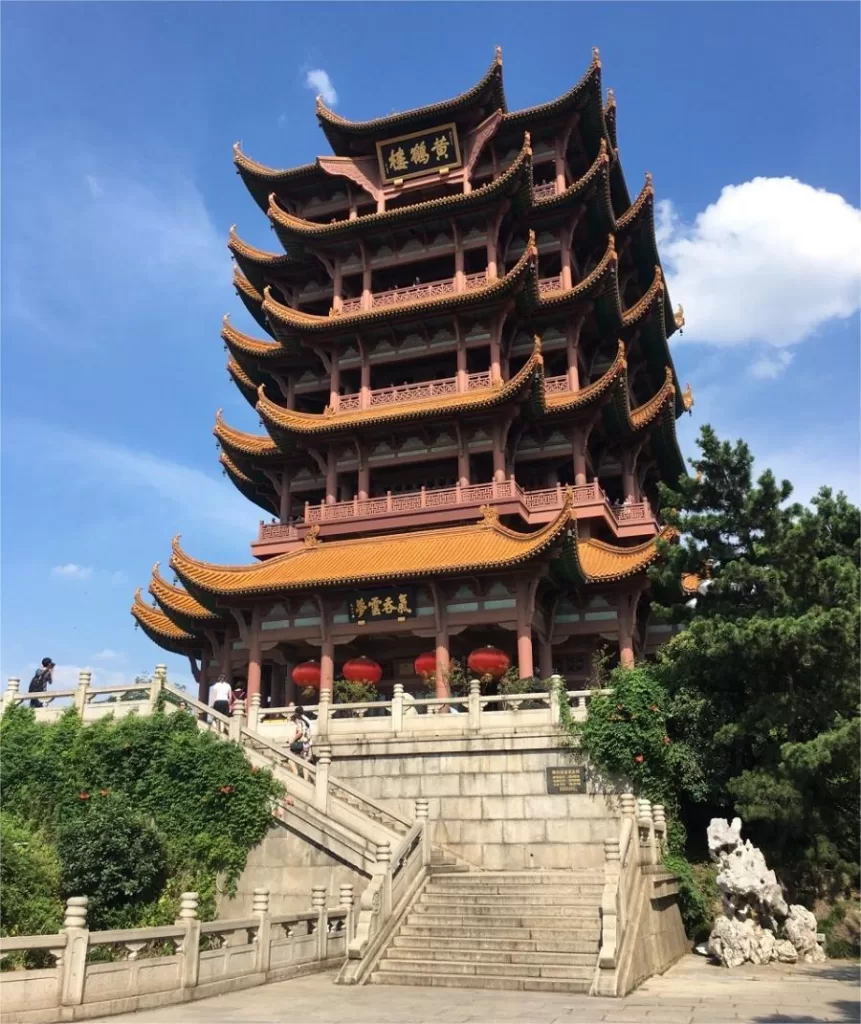
The Yellow Crane Tower’s main structure is a magnificent octagonal building within a square frame, constructed using a steel-reinforced concrete framework that mimics traditional wooden architecture. It reaches a towering height of 51.4 meters, with the base measuring 30 meters on each side and the top narrowing to 18 meters. The tower exhibits five layers of overhanging eaves, culminating in a stunning upward-curving roof covered in golden glazed tiles. Supported by 72 circular columns, the top floor extends outward with 60 upturned corners. The exterior of the tower is adorned with bronze sculptures of cranes, victory pagodas, archways, pavilions, and corridors, creating an overall resemblance to a crane poised for flight. The eaves feature inscribed plaques on all four sides, with a prominent gold plaque bearing the calligraphy of the renowned scholar Shu Tong, displaying the characters “Yellow Crane Tower.”
建筑布局
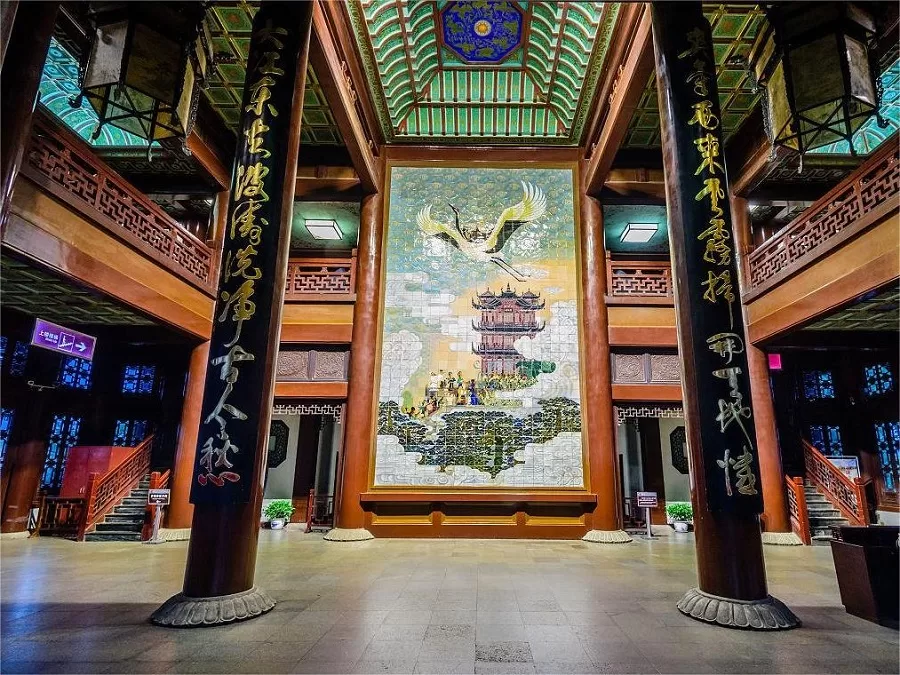
一楼 The first floor boasts a spacious and grand hall with a remarkable central caisson ceiling reaching over 10 meters in height. Adorning the front wall is a massive ceramic mural portraying “White Clouds and Yellow Crane,” flanked by columns that suspend 7-meter-long couplets. These couplets proclaim, “Invigorating air comes from the west, clearing the sky and earth; The great river flows eastward, washing away the worries of the past and present.”
二楼 The second-floor hall features a marble-carved “Yellow Crane Tower Record” written by the Tang Dynasty scholar Yan Bo. This record chronicles the history and anecdotes surrounding the Yellow Crane Tower. Two murals on either side depict “Sun Quan’s Construction,” illustrating the birth of the Yellow Crane Tower and the city of Wuchang. The second mural, “Zhou Yu’s Banquet,” reflects the visits of famous figures to the tower during the Three Kingdoms period.
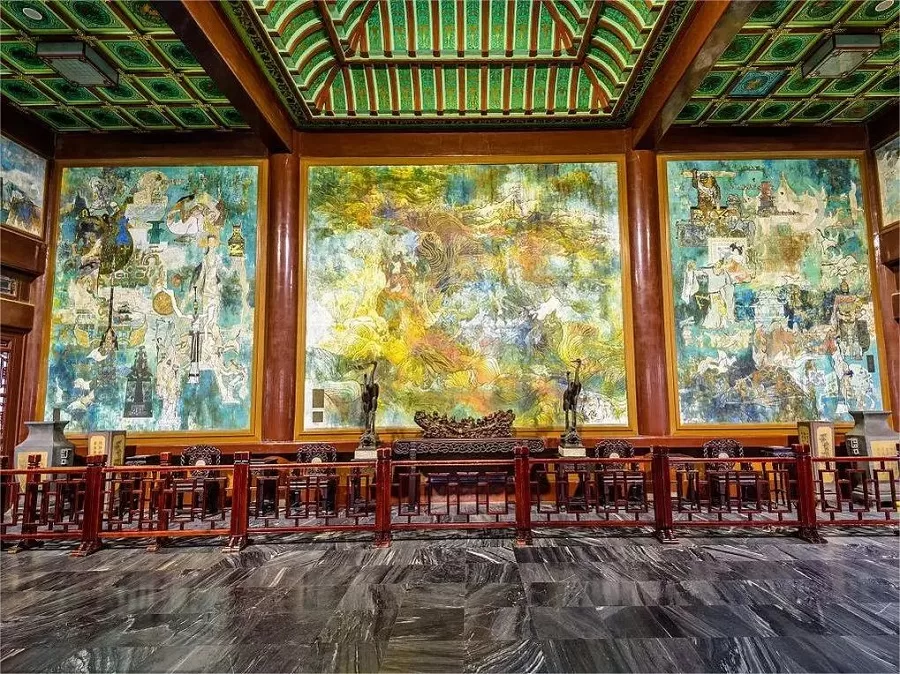
三楼 The third-floor hall showcases embroidered portraits of renowned Tang and Song Dynasty literary figures, such as Cui Hao, 李白和白居易. Excerpts from their poems that celebrate the Yellow Crane Tower adorn the walls.
Fourth Floor: The fourth floor is divided into smaller chambers by folding screens, featuring contemporary calligraphy and paintings by notable artists for visitors to appreciate and purchase.
Fifth Floor: The top-level hall on the fifth floor exhibits a long scroll titled “A Myriad Miles Along the Yangtze River” and a collection of murals, offering a captivating visual journey through the landscape and culture of the Yangtze River.
Vlog about Yellow Crane Tower
从评论中总结出的有用提示
交通选择: Visitors can choose to walk or take a sightseeing bus to enter the park. The fare for the sightseeing bus is 10 yuan per person.
Millennium Bell: Inside the park, there’s a Millennium Bell where you can strike the bell for a fee of 30 yuan per strike.
Daytime and Nighttime Experience: During the day, visitors can enjoy the serene beauty of Yellow Crane Tower Park. At night, there are light shows and live song and dance performances.
Night Tour Activities:
- Goose Pond Performance Times: 19:45, 20:20, 21:20
- Poetry Tablet Gallery Performance Times: 19:55, 20:30, 21:30
- Cui Hao Wall Performance Times: 20:05, 20:35, 21:05
- Yellow Crane Tower Main Building Light Show Times: 19:50, 21:00, 21:50
Location and Photography: Exit from Exit C of Simenqiao Station on Line 5. Upon exiting the elevator, you’ll find photography spots where many photographers are available. The photography fee is 10 yuan per person per photo or 15 yuan per couple per photo. Payment is made after the photos are taken, and the original images will be directly sent to you.
Facts about Yellow Crane Tower
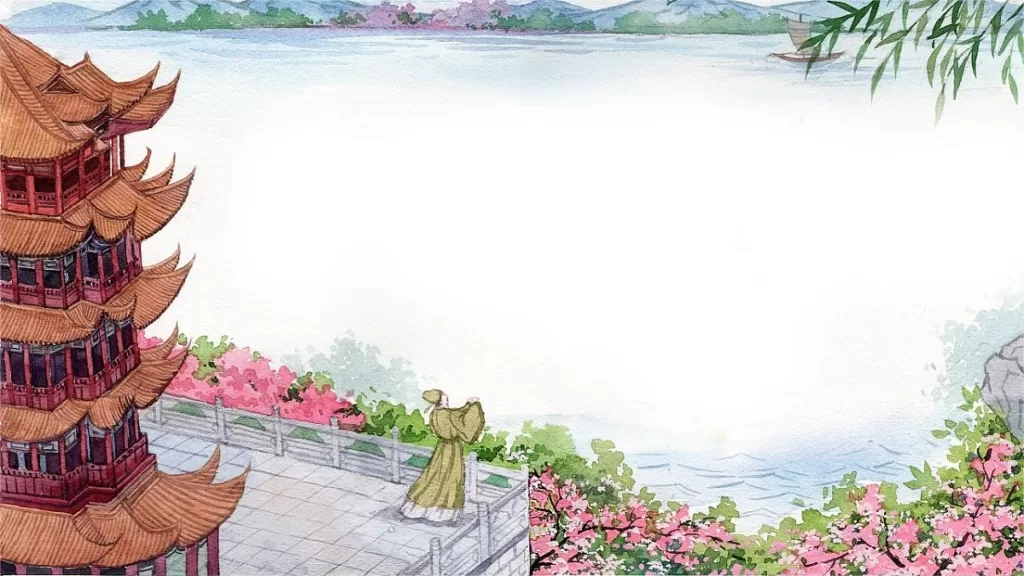
Yellow Crane Tower Poem
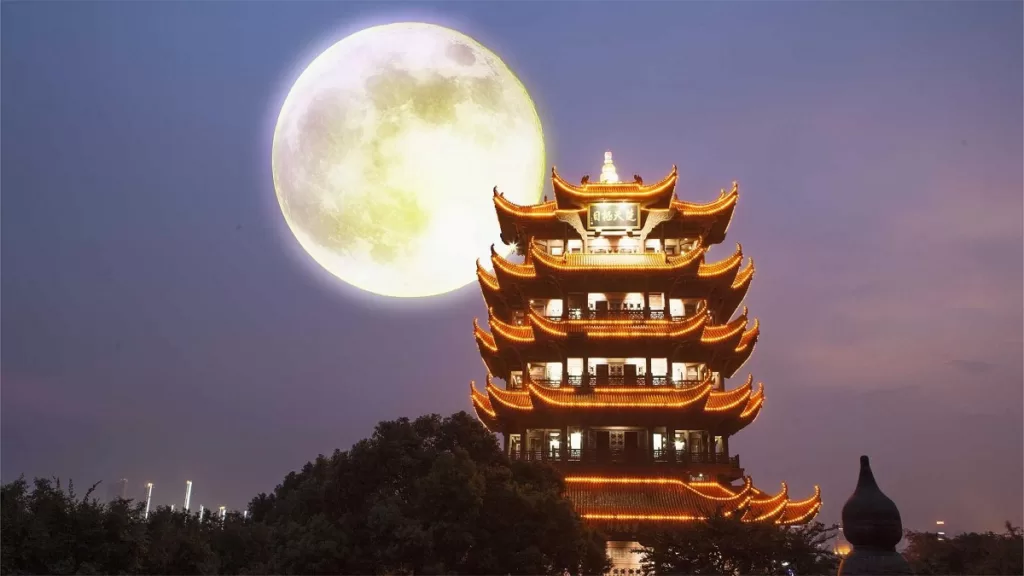
Why Was the Yellow Crane Tower Built
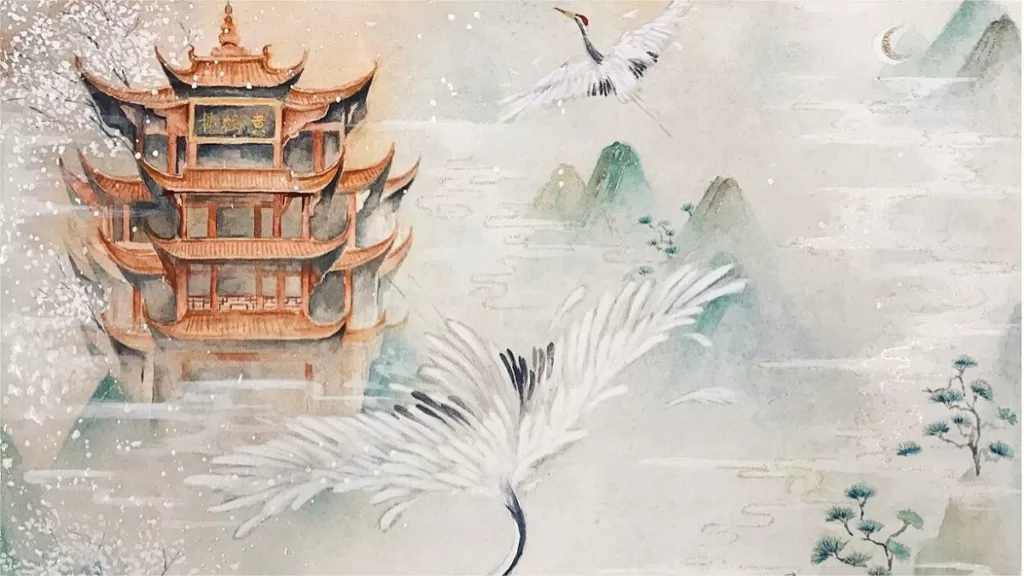
Legends about Yellow Crane Tower
Attractions near Yellow Crane Tower
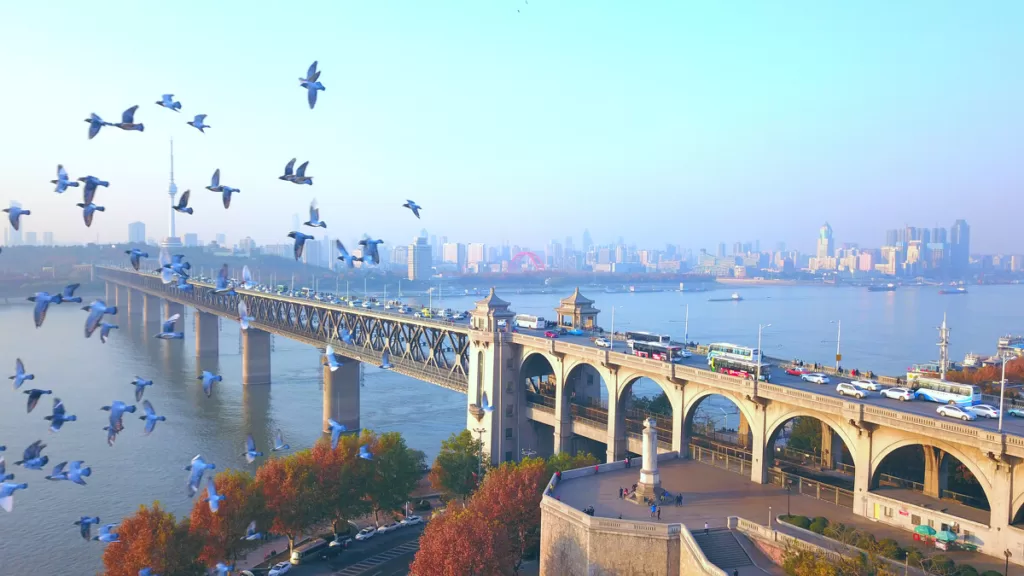
武汉长江大桥 - 长江第一桥
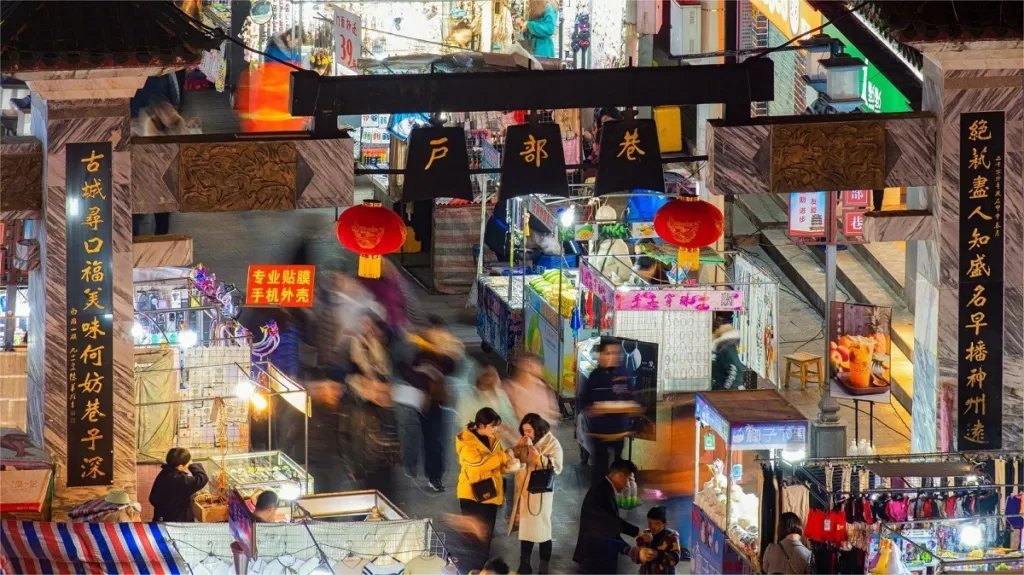
胡布胡同--美食家的天堂

丹华林街 - 建筑博物馆
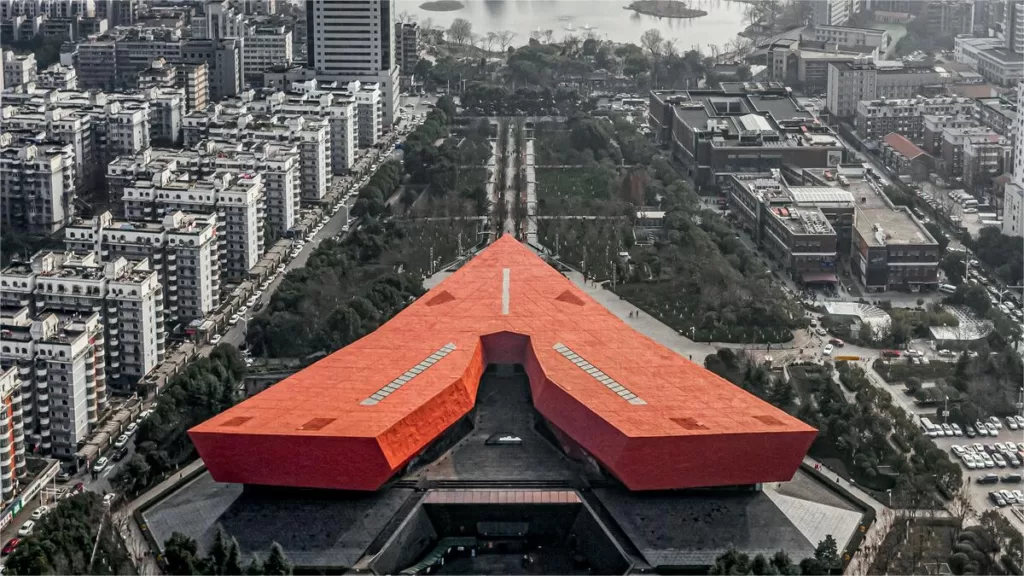
辛亥革命博物馆 - 辛亥之旅

长春道观 - 供奉丘处机的道观

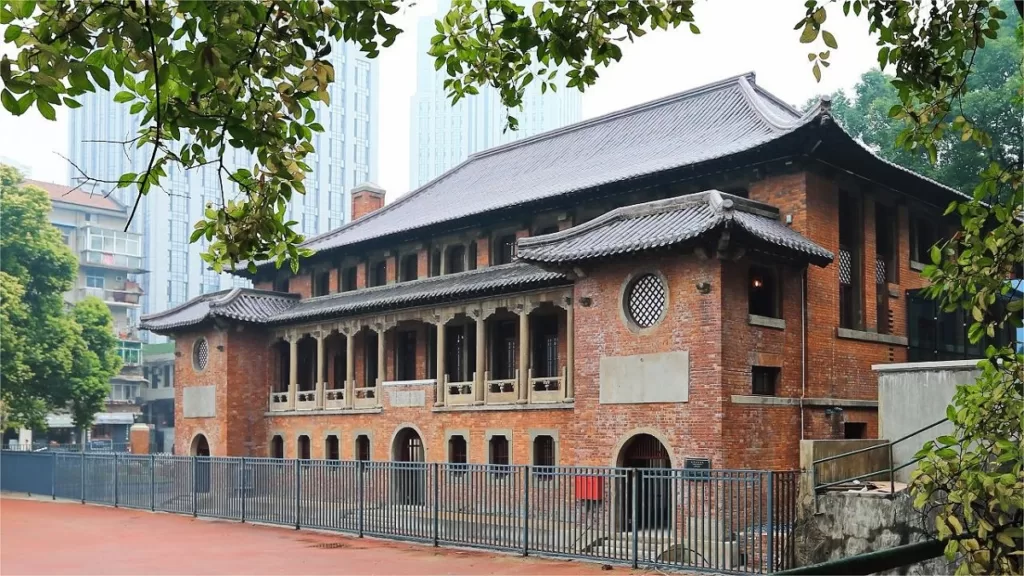
詹姆斯-杰克逊博物馆 - 纪念文华大学首任校长

Wuhan Revolutionary Museum – A record of Chinese Communist Party